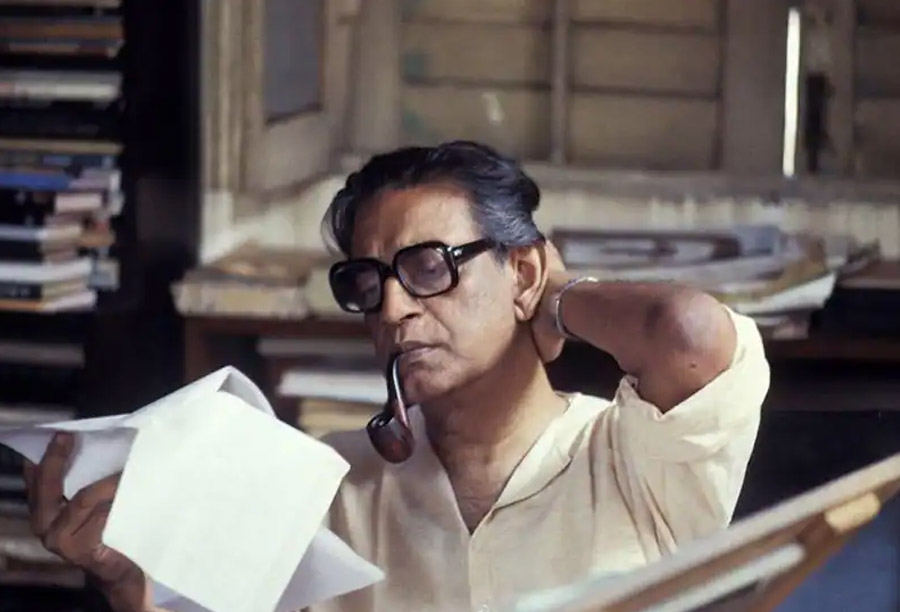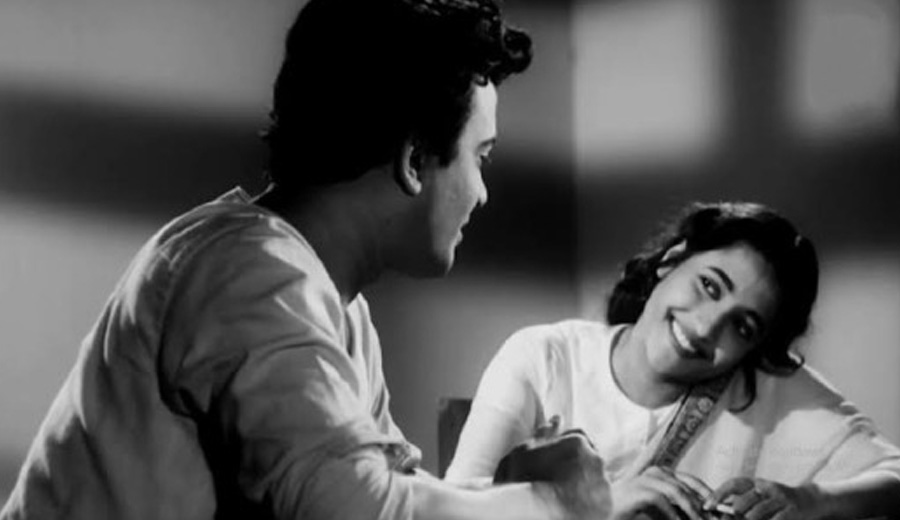Shankha Roy is a famous actor today. He is a familiar and highly popular face on TV soaps, web series, and big-screen feature films.
His interest in acting was fired up by watching great movies in the darkness of the movie theatres of Kolkata.
Even when he was a child, the grandeur of films always attracted him like butterflies are attracted to colourful flowers. This is more of a contribution from his father, Sudhanya Roy, a noted film critic. Moviegoing was always a sort of celebration at their home. There was no OTT in the nineteen-eighties, and TV soaps were as rare as hailstorms in Kolkata. Yes, going to the movies was the leading entertainment then.
Every weekend, they went to the movies. Shankha and his parents were sometimes joined by their neighbours, friends, and relatives. Multiplexes were unheard of then, only single-screen theatres. They were in North Kolkata, the New Market area, and South Kolkata. The theatres in the New Market area used to show Hollywood movies. Shankha got introduced to some of the iconic international movies in those theatres.
Most of them vanished today, but before discussing that, let me tell you how Shankha’s passion for films grew and what effect it had on him.
Romance Blossomed in Movie Theatres
All over the world, romance thrived in the movies. Especially romantic movies.
Kolkata is no different. In the absence of countless choices of entertainment in the nineteen-eighties, movies provided those two and half hours of privacy and intimacy.
Immersing in the conflicts of the movies, humming those melodious songs, and finishing the evening off with some snacks in an eatery was the definition of quality time in those days.
The same happened with Shankha. Bunking college to watch a film with his girlfriend was part of his growing up.
Movie Theatres in North, Central, and South Kolkata
Interestingly, Kolkata had its movie zones. There were clusters of movie theatres in North Kolkata, Central, and South Kolkata. Hatibagan area of North Kolkata also doubled up as the go-to place for stage theatres.
We had Uttara, Rupbani, Mitra, and Minar in the Hatibagan area of North Kolkata, and Metro, Globe, New Empire, Elite, Roxy, Lighthouse, and Tiger near Esplanade.
Theatres in South Kolkata were mostly located in and around Bhawanipur. Ujjala, Basusree, Purna, and Bijli were the prominent ones beside Priya and Navina.
Some of them are still going on, weaving the magic of movies on screen every afternoon and evening but a majority of them stopped functioning, as the revenue became too less to remain financially viable.
Well-known movie theatres closed down and department stores and restaurants came up in their places.

Iconic names such as New Empire, Lighthouse, and Globe became memorials of the past — one after the other. All over Kolkata, the number of closed theatres must be more than the number of the running ones.
Economic realities turned unfavourable for the single screen theatre. And most of them failed to maintain cleanliness, and do basic upgrades of facilities over the years. Even ACs did not cool the insides of some of these halls.
A new approach emerged and it changed moviegoing forever in Kolkata.
How did moviegoing change forever because of this?
Let’s find out.
Multiplexes Started to Crop Up
During this time when traditional movie theatres had been languishing, moviegoers’ expectations underwent a sea change. They were wanting better cleanliness, more comfortable seats, and food and beverage.
Multiscreen theatres or multiplexes came up and moviegoers started patronizing them. Most of them came up in shopping malls or near shopping malls so watching movies became part of any shopping trip.
There are food courts at shopping malls, and food and beverage are served inside the theatre also.
Today, all swanky shopping malls in Kolkata have movie theatres. There is more than one screen in all of them.
Having more than one screen helps the theatre owners achieve a higher economy of scale because there is more choice to exhibit more than one film at a time.
This brought back the financial viability of the business and even if the ticket prices in multiplexes are higher than in some of those single-screen theatres, moviegoers don’t mind. Gen Z and Millennials do not shy away from paying a bit more for comfort and convenience.
The Devastating Effect of the Pandemic
The going was good and multiplex companies like Inox-PVR were looking at amazing growth opportunities when Covid hit us with a deadly blow.
It closed down the theatres, stopped movie shooting, and endangered the earnings of thousands of people dependent on the industry.
However, the hunger for great cinematic content was as strong as ever. In fact, it actually grew because of the absence of big-screen cinema.

And cinema is making a huge comeback like Sourav Ganguly did many times to play for India.
The Onslaught of OTT Platforms in Recent Times
The pandemic induced work from home culture also created its sister habit — watch from home.
In any case, what options do you have when movie halls are closed?
Viewership of the OTT platforms went through the roof. Netflix, Amazon Prime, Zee 5, Hoichoi — all have been gaining viewers. Of course, they have been dishing out fairly popular content.
This was an extreme situation and such situations never last. After the movie theatres opened up, subscriptions to OTT platforms are coming down to more realistic levels.
What to Expect in the Future?
The charm of going to the movies will never die. The fun of viewing larger-than-life imagery on expansive background, the excitement of a day out, munching on tidbits with a glass of Coke, humming the songs, and yes, getting close to your date will never be replaced by OTT platforms.
As the theatres opened up, quite a number of movies have been well-received by the viewers with brisk box-office collections.
The multiplex companies are very upbeat about the future prospects and leading multiplex operators Inox Leisure and PVR, which had announced their merger last month, have a combined pipeline of 2,000 screens and aim to double this size in the next seven years, entailing an investment of Rs 4,000 crore.
Kolkata has always been considered the cultural capital of India.
As the number of screens grows with more multiplexes coming up, Kolkata moviegoers will get back their mojo.
Cinema will never face neglect in the city of Satyajit Ray, Ritwik Ghatak, Mrinal Sen, Tapan Sinha, and Rituparno Ghosh.
And Uttam Kumar, Suchitra Sen, Supriya Devi, and Soumitra Chatterjee will forever rule Bengali hearts.






